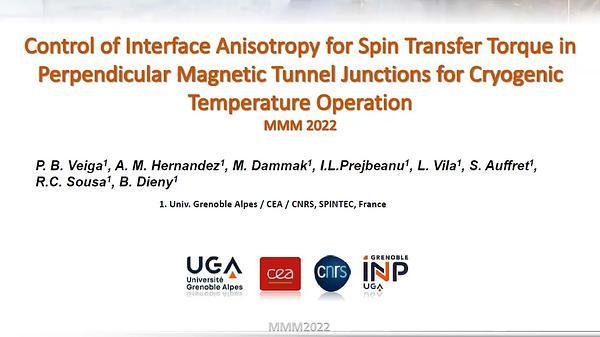
Premium content
Access to this content requires a subscription. You must be a premium user to view this content.

technical paper
The effect of x ray illumination on magnetic domain memory in [Co/Pd] / IrMn multilayers
We are studying the effect that illumination by coherent resonant x-rays may have on magnetic domain memory (MDM) in a Co/Pd / IrMn multilayers 1-3. MDM is the
ability of the magnetic domains to retrieve their exact same domain topology upon field cycling. In the case of Co/Pd / IrMn multilayers, MDM is induced by exchange couplings
between the Co/Pd ferromagnetic layer and the IrMn antiferromagnetic layer. We found that under high dose of x-ray illumination, the material may lose its existing MDM. To investigate
this potential effect, we have used both x-ray resonant magnetic scattering (XRMS) along with magneto-transport measurements 4,5 to track the exchange bias while the sample is
illuminated with x-rays, as illustrated in Figure 1. Magneto-transport is here used to measure the hysteresis loop of the multilayered material and observe exchange bias. A loss of exchange
bias would indicate that the x-rays illumination dose may alter the strength of the exchange couplings and ultimately the amount of MDM. Knowing if a loss of exchange bias has occurred
requires collecting magneto-transport data as well as XRMS data and correlating the observed changes under various dose of x-ray illumination. The data has been collected at different
angles, different configurations, and different temperatures. These configurations consist of Hall effect measurements as well as magnetoresistance measurements. Also, data was collected
using various sets of electrical contacts: a set of inner contacts around the x-ray transmission window and as set of outer contacts for reference. The outer contacts were located at a distance
of ~1 cm whereas the spacing between inner contacts was ~100 microns. These measurements have been carried at BYU in order to better understand the shape of the data observed in-situ
at the APS
References:
1 K. Chesnel, A. Safsten, M. Rytting, and E.E. Fullerton, Nature Communications 7, (2016).
2 K. Chesnel, B. Wilcken, M. Rytting, S.D. Kevan, and E.E. Fullerton, New Journal of Physics 15, 023016(2013).
3 K. Chesnel, J. Nelson, B. Wilcken, and S.D. Kevan, Journal of Synchrotron Radiation 19, 293 (2012).
4 C. Hurd, Hall Effect in Metals and Alloys (Springer, 2012).
5 L.J. van der Pauw, A Method of Measuring Specific Resistivity and Hall Effect of Discs of Arbitrary Shape (1958).


